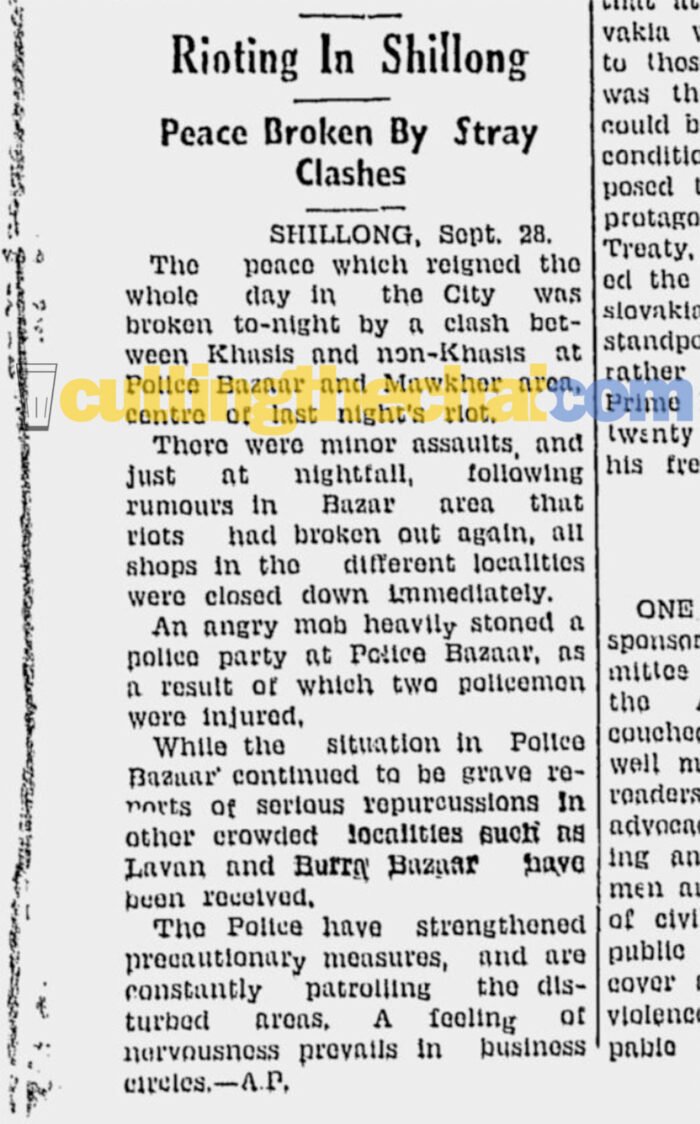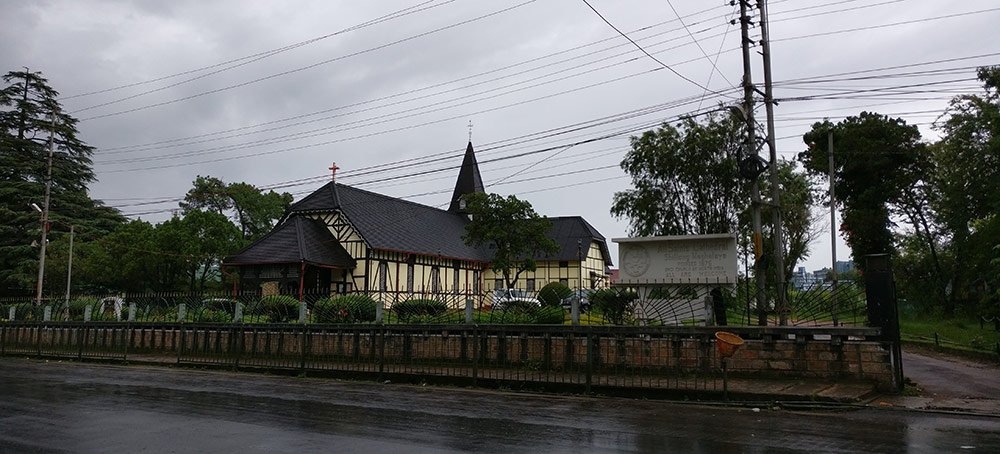The trigger for the 1938 riots in Shillong was political in nature but appears to have quickly taken a communal turn.
The 1979 riots are generally believed to be the first communal riot in Shillong. But then (as I recently discovered) the history of Khasi-Bengali strife in the Meghalaya capital dates to when Shillong was the capital of undivided Assam and before India attained Independence.
The Assam of 1938 included what is now the states of Arunachal Pradesh, Nagaland, Mizoram, Meghalaya and the Sylhet district of Bangladesh.

Newspaper reports from September 1938 detail the clashes, which appear to have an eerie similarity to frequently repeating assaults on non-tribals in Shillong following a rally or procession in recent times.
Five years ago, on the 40th anniversary of the 1979 riots, I had published a post, which was planned to be a first in a series of posts documenting those dark days of ’79-er gondogul. However, the second post in that series never arrived, until now. Since that last post, I have received several messages asking me to complete the story. The story, as we Shillongites know, continues.
Instead of moving forward from the eventful afternoon of October 22, 1979, let me take you on a flashback four decades ago to the night of September 27, 1938. But before that, a brief backgrounder, to give the story some context.
Shillong was the capital of undivided Assam since 1874. The first elections to elect a provincial government were held in 1937 and no party got a clear majority.
Syed Muhammad Saadulla of the Assam Valley Party formed a coalition government, in which JJM Nichols Roy (an eminent Khasi leader and the architect of the 6th Schedule of the Indian Constitution) was a minister.
However, the Saadulla government resigned on September 13, 1938, before it could face a no-confidence vote in the Assembly. Gopinath Bordoloi-led Indian National Congress coalition was to take over the reins of the Assam government and the Assam Governor Robert Neil Reid had asked Saadulla to continue in a caretaker role until the Bordoloi ministry was formalised.
According to newspaper reports, at around 8PM on September 27, 1938, “serious rioting broke out”.
A public meeting was organised by Nichols Roy’s Progressive Nationalist Party where the outgoing Prime Minister of Assam Saadulla addressed the gathering. After some supporters of the Congress-led coalition at the meeting asked to be allowed to speak and were denied, there was some chaos at the meeting and chairs, benches and desks were hurled.
The police arrived and dispersed the crowd. Following which, “an infuriated mob, mostly of Khasis, stated to be supporters of the last Cabinet thereupon blockaded the Mawkhar area and began to attack passersby with daggers and lathis. The mob moved to the Police Bazar area and attacked Bengali-owned shops,” reported the Indian Express.
“When the shopkeepers offered resistance, they left the scene for the time being but reappeared after a few minutes in larger numbers and attacked with greater vehemence.”
There were 25 cases of assault by stabbing and stone throwing reported that night.

The tension continued the next day. An Associated Press report in the Indian Express said, “there were minor assaults just at nightfall following rumours in Bazar area that riots had broken out again.”
“An angry mob heavily stoned a police party at Police Bazar, as a result of which two policemen were injured.”
“While the situation in Police Bazaar continued to be grave, reports of serious repercussions in other crowded localities such as Lavan (Laban) and Burra (Bara) Bazar have been received.”

Bangla newspaper Jugantar, reported that the residence of local Congress vice-president Chandrachud Dutta was attacked by around 300 rioters.
The Jugantar report highlights the claim that “many Bengali Hindus seriously hurt”.

Subhash Chandra Bose, who was then the President of the Indian National Congress, in his statement following the riots alleged that, “a large number of rowdies were imported into Shillong with the object of terrorising those members who showed any sign of joining the Congress Coalition Party.” Bose visited Shillong soon after in November 1938.
Unlike in 1979, the riots of 1938 appear to have been soon brought under control. So much so that there is little mention of it in the public discourse on the history of communal violence in Shillong.
The trigger for the 1938 riots was political in nature but appears to have quickly taken a communal turn.
There’s mention that there was a similar limited-scale violent altercation between the Khasis and Bengalis following the 1967 Assam Assembly elections which had taken a communal colour.
Shillong Assembly constituency was the only unreserved constituency in the hill districts of Assam. The APHLC (All Party Hill Leaders Conference) candidate H Hynniewta, a Khasi, had defeated the two opposing Bengali independent candidates LVK Dey (a lawyer and father of a top Assam police officer) and AS Ray by a comfortable margin of 5,528 votes (21% of the total votes polled).
The pattern of violence from 1938 still find echoes in Shillong of the 2020s.
I am working on this project of documenting the different histories of Shillong. If you have any resources to share in the form of old documents, photographs, memories, access or anything else, please contact me here.






One comment
The 1938 Shillong riots: The forgotten story of Khasi-Bengali clashes in undivided Assam